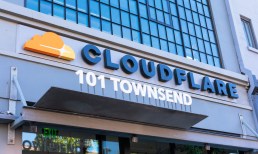“When we launched the loyalty program in 2017, it started out as an opportunity to engage our frequent customers. It was all about trying to get downloads [of our app] and just trying to get people to utilize the technology,” Rebhun told PYMNTS in the interview. Now, he explained, the company places “a much greater focus on segmentation and artificial intelligence.” The chain targets its offers to each consumer, personalizing the messaging around their needs and preferences, in effect performing “microsegmentation” of these loyal customers.
This fine-tuning of messaging and marketing has been in the works for years. Back in 2018, Sherif Mityas, then-chief experience officer of TGI Fridays, told a panel of industry experts, “Gone are the days of trying to figure out what millennials want versus boomers. We want to know what Mary wants versus Susan, and we need an unprecedented amount of data, analytics and machine learning to utilize this data in the best possible way.”
In the last year, the development of this technology has become more essential than ever, as consumers have turned to mobile ordering solutions to fulfill their contact-free meal delivery needs. Quick-service giants have seen record-high digital sales, often led by enhanced loyalty offerings. Additionally, the December edition of PYMNTS’ Delivering on Restaurant Rewards brief found that 87 percent of consumers plan to maintain their food ordering behavior after the pandemic is over.
“Guest expectations have changed forever. Exceeding them requires not only improving the loyalty offering, but also using program data to improve the guest experience,” Michelle Tempesta, head of product for Paytronix, reflected in the January edition of the Order to Eat Tracker. “…Guests expect spot-on recommendations, relevant offers and for brands to extend the hospitality once provided at a single-unit establishment to every location in a chain through personalized digital engagement at scale.”
As many quick-service restaurants (QSRs) are personalizing their app displays and loyalty rewards, some are even personalizing their on-site presences with responsive signage. As software giant Intel explained in a sponsored QSR Magazine post, a sign that can detect the type of car approaching can tailor its offerings to the type of consumer who might drive that vehicle. A more family-friendly vehicle, for example, could prompt the display of more family-friendly menu items. Burger King, meanwhile, is piloting a program that uses Bluetooth to identify Royal Perks loyalty program members, displaying their previous orders on menu boards as they drive by, reports The New York Times.
Advertisement: Scroll to Continue
In addition to personalizing offers based on customers’ preferences, restaurants are also taking into account environmental factors. Burger King’s digital signage factors in which menu items are popular in a given area, making recommendations based on local tastes. McDonald’s, meanwhile, owns the “experience optimization platform” Dynamic Yield, which allows it to customize recommendations based on environmental factors such as weather changes and the time of day, according to The Spoon.
PYMNTS data found that 39 percent of U.S. consumers cited loyalty programs as an important way to encourage them to spend more, 44 percent of restaurant customers use these programs and 59 percent of U.S. consumers order from restaurants online. Enhancing these offerings with tailored messaging and rewards that are ultra-personalized with data-driven AI will be key to helping restaurants stand out as consumers grow increasingly digitally savvy.
Read More On Restaurants:




